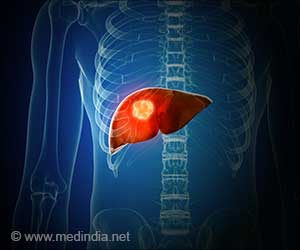It is reported that robot-assisted surgery appears feasible for treatment of selected head and neck cancers.
It is reported that robot-assisted surgery appears feasible for treatment of selected head and neck cancers.
The report occurs in the April issue of Archives of Otolaryngology, Head & Neck Surgery, one of the JAMA/Archives journals."Since the introduction of the surgical robot in 1999, robot-assisted cardiac, gynecologic and urologic procedures have become widely accepted throughout the country," the authors write as background information in the article. In these specialties, robotic procedures have been associated with less blood loss, fewer complications, shorter surgery durations and fewer days in the hospital or in intensive care compared with traditional open procedures. "Robotic surgery in the head and neck offers the possibility of limited surgical morbidity [illness], reduced hospital stay and improved lesion visualization over open approaches and traditional transoral [through the mouth] techniques."
Bridget A. Boudreaux, M.D., and colleagues at the University of Alabama at Birmingham assessed the feasibility and safety of robot-assisted surgery in 36 patients with tumors involving the oral cavity, throat or larynx. Between March 2007 and May 2008, 29 (81 percent) of the patients underwent successful robotic resection, or removal of the diseased tissue. The operating room was arranged with the surgeon's console, from which he or she operated the robotic arms that held the surgical equipment, approximately eight feet from the head of the bed.
Negative margins (when no cancer cells are found at the edge or border of the removed tissue) were obtained in all 29 patients who successfully completed surgery. Of those, 21 had breathing tubes that had been in place during surgery safely removed before leaving the operating room. The average operating time was 99 minutes, and the average hospital stay was 2.9 days.
"The surgical robot has several advantages over traditional endoscopic and open approaches, including three-dimensional visualization, tremor filtration [steadying of any shaking in the surgeon's hands] and greater freedom of instrument movement," the authors write. "These advantages were appreciated in this study and offered good lesion visualization, short hospital stay and good functional preservation."
Patients who had smaller tumors and no teeth appeared more likely to have successful robot-assisted procedures. However, no clinical guidelines for robotic procedures in head and neck cancer patients yet exist, the authors note. "This clinical series demonstrates that robotic surgery can be utilized successfully in patients with T1 to T4 lesions located in the oral cavity, oropharynx [back of the mouth], hypopharynx [bottom part of throat] and larynx with good preservation of swallow function," they conclude. "This study does not confirm oncologic or functional superiority to any standard method of treatment. Further studies are needed to define the indications, advantages, limitations and outcomes of robotic surgery for head and neck applications."
Advertisement
ARU









